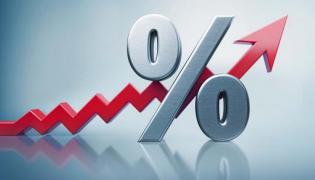The United Soybean Board (USB) released results of a new survey, highlighting consumer perceptions...
Percent of Consumer’s Income Spent on Food Rises to 30-Year High

Eating continues to cost more even as overall inflation has eased from the blistering pace consumers endured throughout much of 2022 and 2023. Prices at restaurants and other eateries were up 5.1% in January 2024 compared with January 2023, while grocery costs increased 1.2% during the same period, according to Labor Department data.
Relief isn't likely to arrive soon. Restaurant and food company executives said they are still grappling with rising labor costs and some ingredients, such as cocoa, that are only getting more expensive. Consumers, they said, will find ways to cope.
"If you look historically after periods of inflation, there's really no period you could point to where food prices go back down," said Steve Cahillane, chief executive of snack giant Kellanova. "They tend to be sticky."
In 1991, U.S. consumers spent 11.4% of their disposable personal income on food, according to USDA data. At the time, households were still dealing with steep food-price increases following an inflationary period during the 1970s.
More than three decades later, food spending has reattained that level. In 2022, consumers spent 11.3% of their disposable income on food.
Many diners have said they are going out less frequently or skipping appetizers, while buying cheaper store brands more frequently at supermarkets and seeking out promotions or deals offered via apps. That is starting to chip away at some sales for food makers and restaurant operators.
Food companies said they are feeling pinched themselves. While commodities such as corn, wheat, coffee beans and chicken have gotten cheaper, prices for sugar, beef and french-fries are still high or rising. Companies across the U.S. economy have also raised prices beyond covering their own higher expenses, lifting profits for industries including retail, biotech and manufacturing.
Food inflation has raised the ire of President Biden, who took to Instagram during the Super Bowl and during his State of the Union address to blast food makers that he said were providing less bang for the consumers' buck -- putting fewer chips in each bag or shrinking the size of ice-cream containers. "The American public is tired of being played for suckers," Biden said. "I've had enough of what they call shrinkflation. It's a rip-off." Biden blasted Snickers, as another example of shrinkflation, but the candy bar’s manufacturer (Mars) was quick to debunk his statement. The company stated, “We have NOT reduced the size of Snickers singles or share size in the U.S."
David Chavern, CEO of the Consumer Brands Association, which represents major food manufacturers, said the industry offers many choices at different price points. "We hope to work with the President on real solutions that benefit consumers," he said.
In suburban Chicago, Lisa Wister said her food bills are rising faster than her family's income, leading them to make their own granola from scratch and pack their own snacks for the movies. "Everything is a negotiation, an analysis about our budget," said Wister, an occupational therapist. "It's exhausting." These reactions are realizations across the entire country.
EDITOR’S TAKE:
It should be noted that the Consumer Price Index (CPI) tries to track changes in product size and quantity when calculating changes in the general level of prices so that it accurately reflects inflation. When a product in the CPI basket decreases in size but keeps the same price, the Bureau of Labor Statistics (BLS) considers this a price increase because the consumer is getting less for the same amount of money. This adjustment aims to ensure that the CPI reflects the weighted average not of observable sticker price changes – but the actual per unit price the consumer faces.
In reality, tracking and adjusting for shrinkflation can be complex, as it requires constant monitoring of product changes in the market and changing weights of consumer spending baskets. While the BLS makes efforts to account for these changes, it may not capture all instances of shrinkflation, therefore, potentially underestimating the true inflation rate experienced by consumers.
The President may want to rethink his position on shrinkflation. If, in fact, the CPI isn’t accurately capturing shrinkflation, then the real story here is measured inflation has been somewhat underestimated – inflation has been worse than has been widely reported by the current administration. If, on the other hand, inflation has been measured correctly, the alternative would be to raise package prices rather than shrink their size.
We are aware that this is not the first time we have shared an article about food prices and inflation. However, it is such an important topic which deserves much attention because it is affecting so many consumers and businesses in this country.







